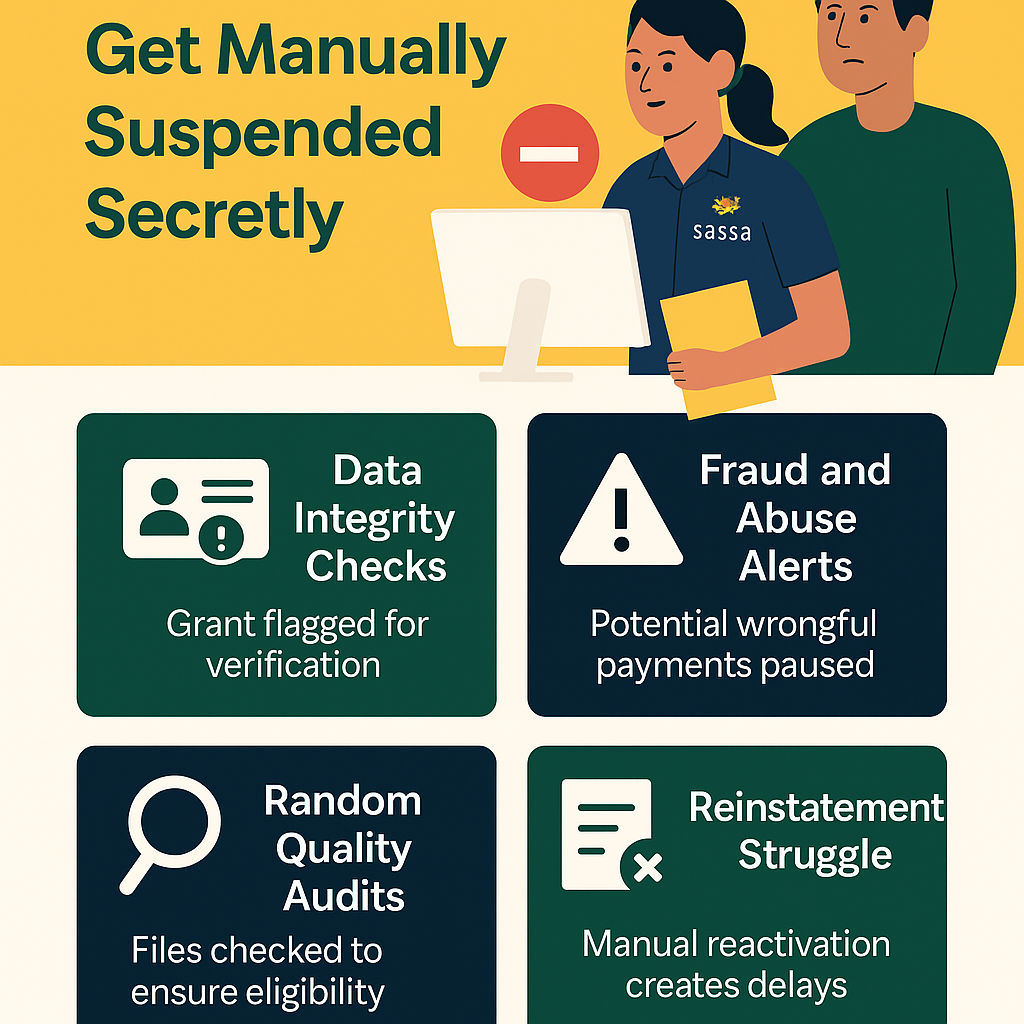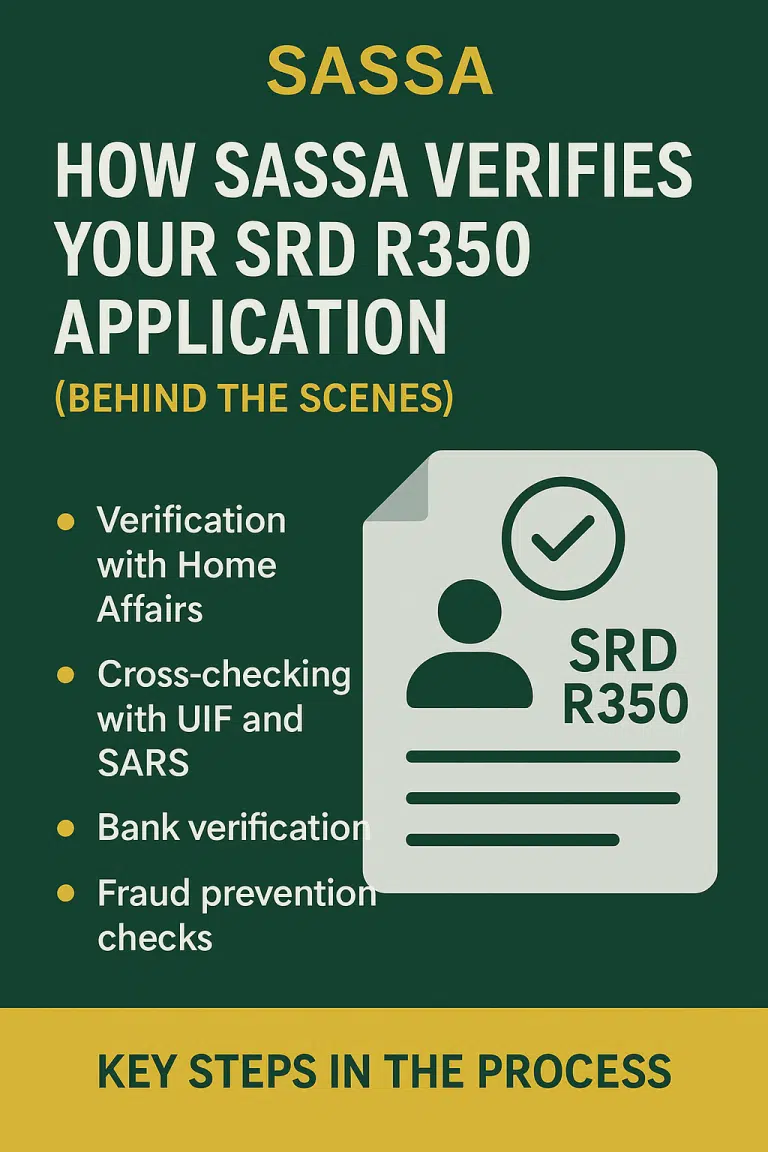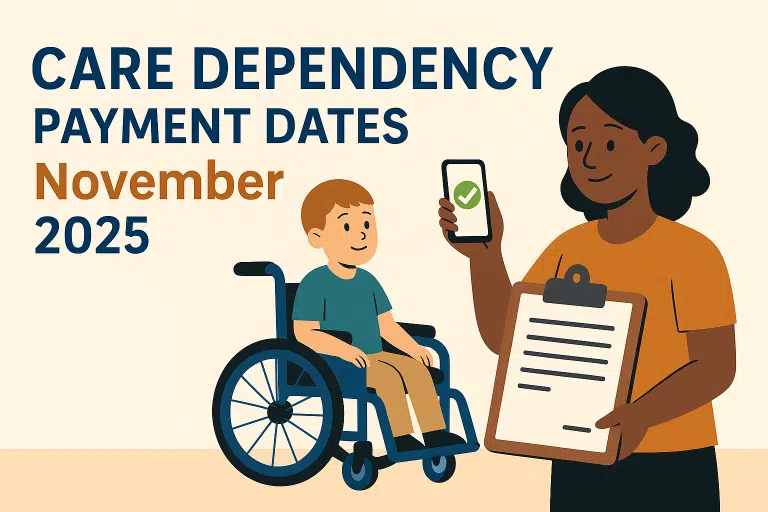Why Some SASSA Grants Get Manually Suspended Secretly
Every month, thousands of South Africans wake up to find their SASSA payments suddenly missing no SMS, no letter, no reason. When they check the online portal, everything still says “Active”. The truth is, many of these cases are the result of manual suspensions a quiet internal action taken by SASSA staff or system auditors that isn’t visible to the public or even the call centre.

Manual suspensions are one of the least discussed realities of the SASSA system. They happen deep inside the administrative process, far away from public documentation or online explanations. Understanding them helps explain why some beneficiaries are suddenly left without income for weeks or months.
What Is a Manual Suspension?
A manual suspension is when a SASSA officer or internal reviewer freezes a grant directly from the internal management system, often without an automated code or digital record being sent to the beneficiary’s file in the public system.
This can happen at the regional office level or through data verification teams that audit unusual activity. These teams have authority to stop payments temporarily while investigating potential fraud, duplicate records, or incomplete documents.
The problem is when they do this manually, the system doesn’t always update the national dashboard that citizens use to check their status. The grant looks “active” from the outside but is “frozen” in the backend.
Why SASSA Does It
There are three main reasons why manual suspensions take place:
Data Integrity Checks
If your ID number appears on more than one grant record for example, you are listed as both a parent and a dependent the system automatically flags your file. But before cancelling it fully, an officer manually suspends it for verification.
Fraud and Abuse Alerts
Sometimes local offices notice patterns that the national system misses. For example, if multiple people collect using the same banking address or if one phone number is linked to several accounts, they trigger a manual review.
To prevent wrongful payments, officials pause those grants immediately.
Random Quality Audits
Every few months, the SASSA internal audit unit selects random files to check supporting documents, such as proof of income or death certificates. During this process, they often suspend payments to ensure no money moves while the audit is ongoing.
The Invisible Nature of the Problem
Manual suspensions are not recorded in the same field that digital rejections or holds are stored. This is why call centre agents often tell beneficiaries that their grants “are still active.”
In reality, the payments are blocked at the post-payment stage, meaning the transaction is held between SASSA’s system and the Postbank or other payment vendor. That makes it invisible to the public-facing tracker.
This gap between what’s seen and what’s actually happening inside the system is why so many people struggle to find answers.
How It Affects Beneficiaries
For someone relying on a SASSA grant to buy food or medicine, a sudden stop is devastating. Most beneficiaries assume it’s a delay or network error, not a deliberate pause.
They visit offices multiple times, only to be told that everything looks “fine.” The suspension is buried deep inside the administrative network and only specific staff members have access to see the internal reason code.
In many rural areas, this has led to frustration and even protests, as people are told to “wait for the next cycle” without knowing that their file is actually frozen.
The Reinstatement Struggle
When a manual suspension happens, reinstating the grant isn’t as simple as pressing a button. Because it was stopped outside the automated workflow, it needs manual reactivation usually by the same official or a higher authority in the regional office.
This process can take weeks. If the original officer is on leave or transferred, the file can remain suspended indefinitely. In some provinces, files from 2023 are still waiting for reactivation simply because the verification team changed.
Internal Communication Gaps
The lack of communication between regional offices and the national system is a key reason manual suspensions remain invisible.
When regional SASSA teams act on suspicious cases, they often don’t update the national database immediately. Sometimes, they record the suspension on internal memos or Excel sheets used for audit tracking. Those memos are never uploaded into the public system.
That’s why no trace exists for the average person trying to check online and why media inquiries often yield the same vague reply: “The grant is under review.”
What Beneficiaries Can Do
Although there’s no official process to view manual suspension notes, beneficiaries can try a few approaches:
- Visit the regional SASSA office (not just the local one). Regional offices often hold audit records.
- Request the internal “case number” associated with your grant if it’s flagged for review.
- Keep a record of the last successful payment date this helps identify where the suspension began.
SASSA is reportedly working on integrating manual audit logs into its main system, but there’s no confirmed rollout date.
Inside Perspective from Staff
Several SASSA employees have quietly admitted that manual suspensions are a necessary but risky tool. They help prevent fraud and ensure eligibility, but they also create unnecessary hardship when communication fails.
In some regions, employees are encouraged to use manual holds during investigations to “avoid paying unverified cases,” yet they receive no instructions on how to update the online record afterward.
This internal inconsistency keeps the public in confusion even though the intention was accountability.
Conclusion
Manual suspensions reveal the hidden layer of SASSA’s grant system that the public never sees. While they serve an important role in preventing fraud, the lack of transparency, digital updates, and communication makes them harmful to innocent beneficiaries.
Until SASSA integrates these backend actions into its public status system, many people will continue to face silent payment stops with no clear reason. In a country where social grants are a lifeline, invisible decisions should never determine whether someone eats or goes hungry.






